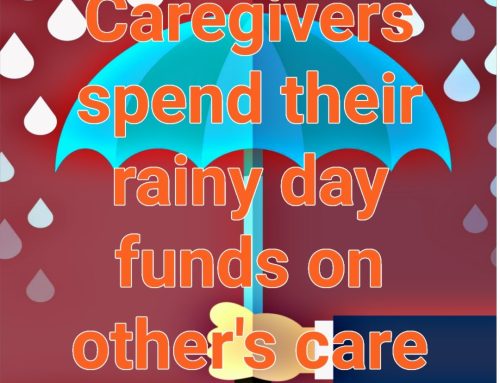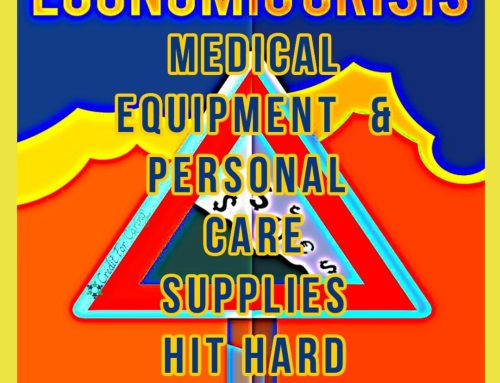
October Is Long-Term Care Planning Month – Part One
October Is Long-Term Care Planning Month – Part One
This October, during Long-Term Care Planning Month, pause for a moment to truly consider your future. Your aging journey is deeply personal, and now is the time to share your thoughts and plans with those who will stand by your side—whether offering support at home or helping manage finances throughout your retirement. These conversations are more than just practical; they’re vital as we approach the Annual Enrollment Period (AEP) for Medicare Plans. Yes, medical costs may already be part of your retirement planning, but what about the unexpected needs—like custodial care, help with everyday activities, or even transportation?
What, Not Medicare?
These essentials, often taken for granted, are not covered by Medicare, and without planning, they can easily send seniors on fixed incomes into financial hardship. Shockingly, one-third of Americans mistakenly believe Medicare covers long-term care services, leaving them vulnerable at a time when they deserve stability.
Predicting Future Needs
It’s important to acknowledge that men are statistically more likely to outsource elder care, but the ability and willingness to pay for such services differ widely among families. As you plan for your own long-term care, think carefully about your expectations and those of your loved ones. Are you hoping for in-home care from a family member? Have you had these critical conversations with those you expect will step in? If you’re planning to pay for care, will it be in your home or at a care facility? Do you fully understand the financial implications of each option, and most importantly, do you have a plan to afford the care you deserve?
It Gets Complicated
These are the kinds of questions that spark necessary and sometimes emotional discussions. By asking these questions now, you can ensure that your long-term care wishes align with the reality of affordability and access. Once you have a clear vision of how you want to live in your golden years, you can start to explore the options available to secure care that meets your needs on your terms. Let this October be the time you take charge of your future with confidence and clarity. This Long-Term Care Service and Support (LTCSS) is large and complicated topic. This is the first in a three-part series on the topic.
Long-Term Services and Supports – Who’s Paying?
Long-Term Care Services and Supports (LTCSS) are crucial for assisting older adults with daily activities such as bathing, dressing, housekeeping, and managing medications. These services are not optional for many; in fact, 70% of individuals aged 65 and older will require some form of LTCSS. However, the price for such care is staggering, placing it beyond the financial reach of many families. In 2019, the United States saw spending on LTSS surpass a colossal $426 billion. This article delves into who shoulders the cost of these essential services and examines both public and private sector solutions aimed at easing the financial burden. Understanding the breakdown of payment options is crucial for those planning for long-term care needs.
Medicaid
Medicaid is the largest provider of Long-Term Services and Supports (LTSS) in the United States, covering over 40% of these services, or about $183 billion. While Medicaid helps cover most LTSS, it has its limitations. People who rely on Medicaid often have little choice when it comes to selecting a care facility. This makes Medicaid a last resort for those who can’t afford to pay out of pocket for private facilities or home care. In some cases, older adults must spend down their assets to qualify for Medicaid’s long-term care coverage. This process can leave them with very little money or savings to pass on. Nearly 10% of people who qualify for Medicaid had to spend down their assets to do so, showing just how out of reach these services can be for many.
Public Long-Term Care Insurance
To reduce Medicaid spending and help people avoid depleting their assets, some states are exploring public long-term care insurance programs. Washington state is one example, using a payroll tax to fund its public insurance program. State residents must either buy long-term care insurance from private companies or be automatically enrolled in the state’s program. One of the challenges with this system is that many people who work in Washington live in other states. These workers would pay the tax but wouldn’t receive any long-term care benefits because they are not residents of Washington. Although the program is still being worked out, it is an important step toward addressing the lack of available long-term care services, which most Americans will need in their lifetime.
Medicare
Medicare provides limited coverage for long-term care services. It offers up to 100 days of care in a skilled nursing facility, but it doesn’t cover unskilled care or help with daily activities, such as bathing and dressing. This 100-day coverage period is often much shorter than the actual need for long-term care. Many people need care for over a year, and more than 10% require it for five years or longer. When people first become eligible for Medicare, they are often surprised by how much they have to pay out of pocket and the lack of coverage for services that are essential for seniors.
We’ve Only Just Begun
Long-term service and support is complicated. In fact, the next two blog posts will address this same topic looking at commercial insurance options and, lastly, with tools for you to evaluate your own current and future needs.
Share This Story, Choose Your Platform!
About the author : Monica Stynchula
Credit for Caring: Your Modern DIY Aging in Place Feeling overwhelmed? We've got you! Expert tips, safety products, & innovative solutions for solo agers, families, and communities. Personalized plans, must-have resources, & a supportive community await. Save big & simplify caregiving: Creditforcaring.com

























